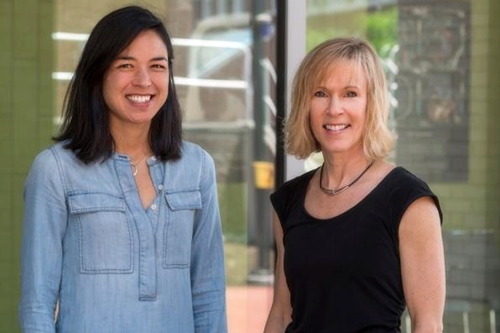3 June 2016. A team of materials and medical scientists is investigating a new process of applying protein-based biomaterials to the healing of chronic wounds. The research led by materials scientists Millicent Sullivan and Kristi Kiick at University of Delaware in Newark is funded by a 4 year, $1.4 million grant from National Institute of Arthritis and Musculoskeletal and Skin Diseases, part of National Institutes of Health.
Chronic wounds are often slow to heal because of inflammation and other issues that inhibit the healing process. Sullivan and Kiick, joined by dermatologist David Margolis at University of Pennsylvania medical school, aim to find a more productive process for healing chronic wounds than growth factor proteins and cellular scaffolds that so far on their own deliver only limited results.
Among the causes of chronic wounds is diabetes that reduces blood flow to the legs and feet, leading to nerve damage and reduced feeling in those regions, as well as slower healing of wounds. CDC says in 2010, some 73,000 Americans required amputation of a leg or foot because of complications from diabetes. While malnutrition and immune deficiencies can also cause chronic wounds, CDC says people with diabetes are 8 times more likely to lose a leg or foot than people without diabetes.
According to the researchers, current methods including growth factor proteins that stimulate gene expression to encourage tissue regeneration, with cellular scaffolds offering a framework to rebuild tissue in the wound, and combination dressings that bring together chemical and physical treatments to wound products, are not in many cases healing chronic wounds. Strategies to boost the performance of these methods, such as increasing the dosages topical growth factors, run the risk of serious adverse reactions.
Sullivan notes in a university statement that “even with these methods, the incidence of full wound closure remains strikingly low, and growth factor delivery methods fail to provide enough growth factor to stimulate the cells appropriately.”
The new process proposed by Sullivan, Kiick, and Margolis is to harness extracellular matrix, the non-cellular component of tissue and organs, to better stimulate the release of growth factors at the site of the wound. Their strategy calls for designing a peptide, a short chain of amino acids, that acts like collagen, a basic and abundant protein found in skin, bones, and other connective tissue. The peptide would combine with extracellular matrix to provide a nanoscale supporting framework on which growth factor proteins can stimulate more gene expression leading to cellular and tissue regeneration.
In addition, the researchers want to enable clinicians to extend the duration of the treatment, from a few days to several weeks, as needed by the severity of the wound. “This tunability, or on-demand release and expression,” says Kiick, “should be ideally suited to the uncoordinated repair processes that are a hallmark of the chronic wound environment.”
The team hopes the biomaterials platform developed under the grant can be applied to other disorders and conditions that can be helped with tissue regeneration.
Read more:
- NIH Funds Biosensors to Monitor Oxygen in Tissue
- Platform Devised for 3-D Engineered Heart, Liver Tissue
- Organovo, UC-San Diego Partner on 3-D Liver Tissue
- Simple Scaffold Developed for Synthetic Heart Tissue
- Purdue Spin-Off Designing Customized Synthetic Tissue
* * *


 RSS - Posts
RSS - Posts
You must be logged in to post a comment.